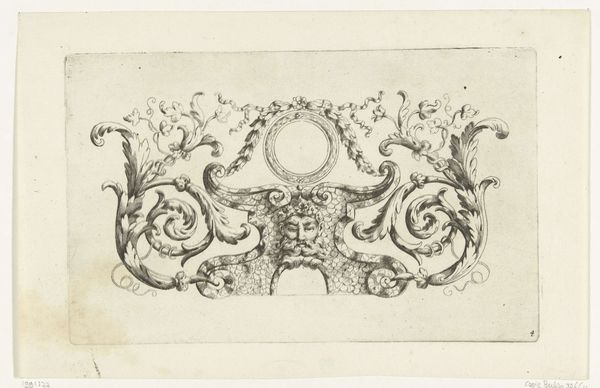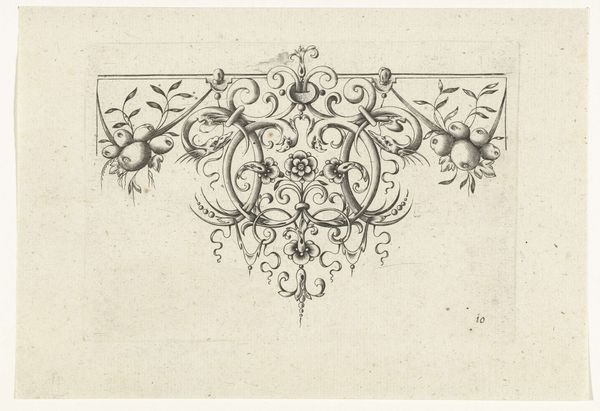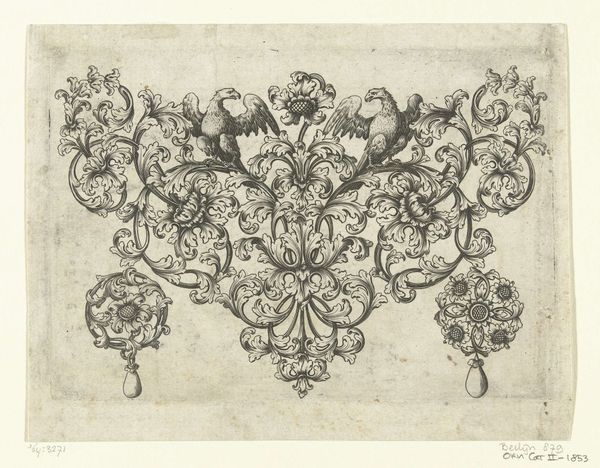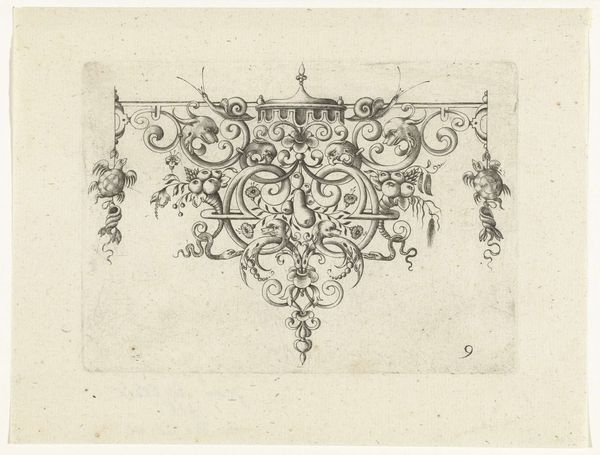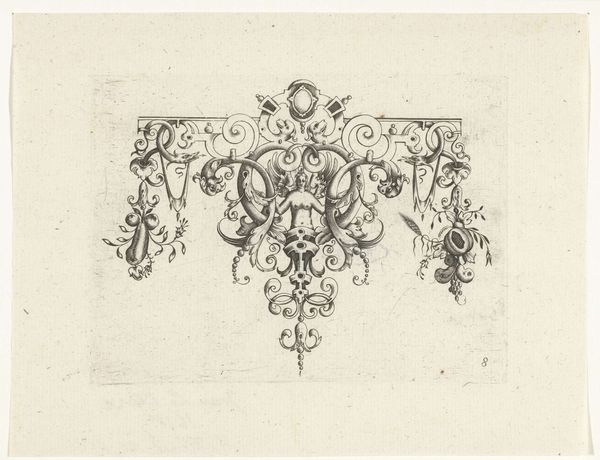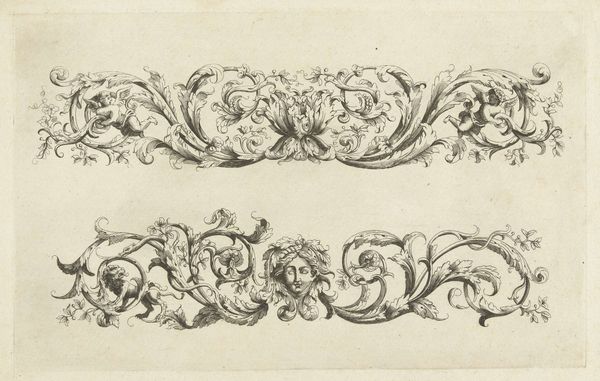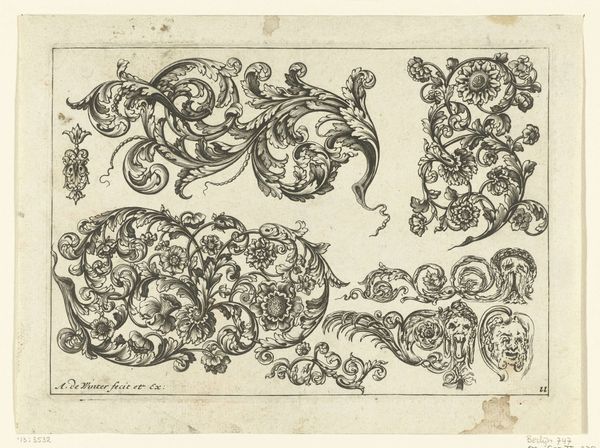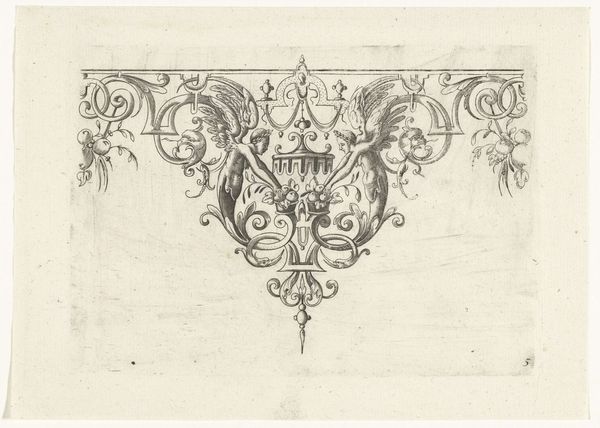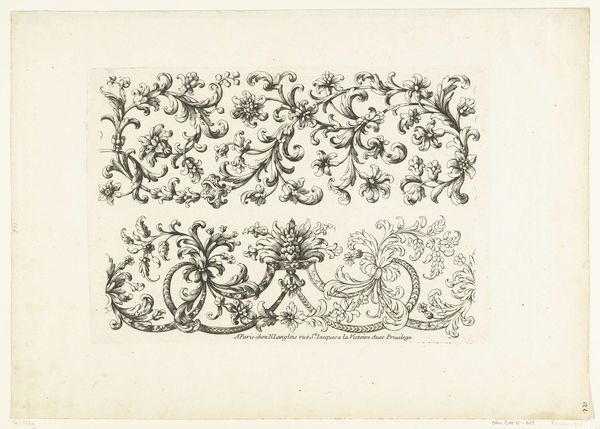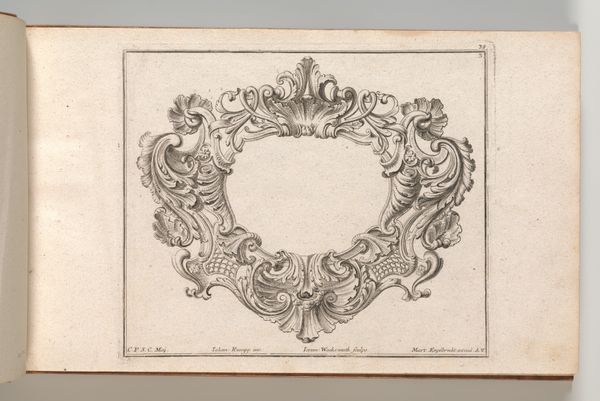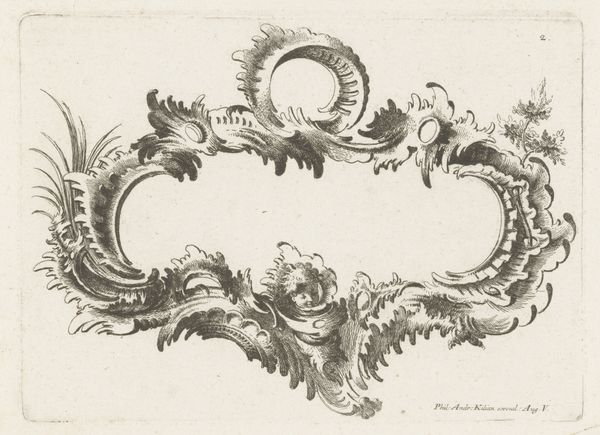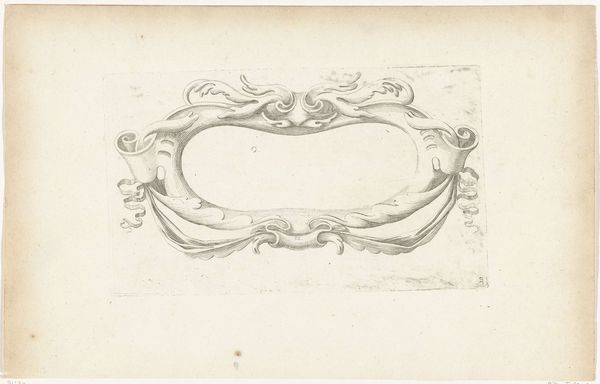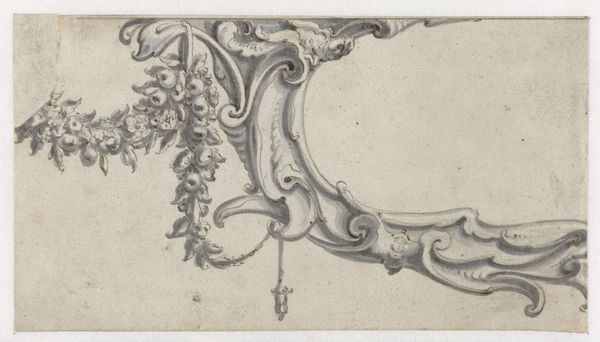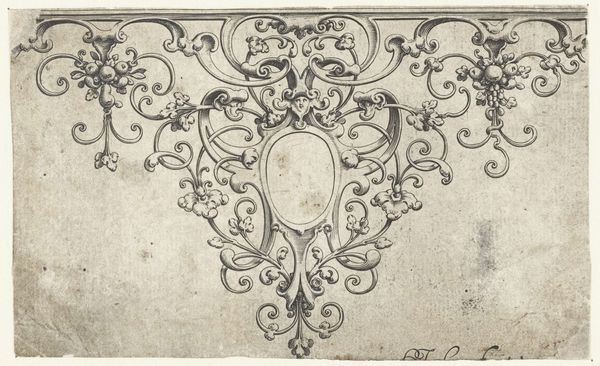
print, engraving
#
baroque
# print
#
landscape
#
decorative-art
#
engraving
Dimensions: height 132 mm, width 213 mm
Copyright: Rijks Museum: Open Domain
Curator: What we have here is a fascinating print titled "Fries met boom in ovaal medaillon," or "Frieze with tree in oval medallion." Created by an anonymous artist around 1680-1690, it's an engraving, showcasing both landscape and decorative art styles. Editor: It strikes me as intensely ornate, even fussy. The central tree scene seems almost overwhelmed by the swirling foliage around it. Is this meant for purely aesthetic appreciation, or did it serve some other function? Curator: These prints were often design sources for artisans. Examining the paper and the printmaking process gives clues—it could have been part of a larger book of models, informing the creation of furniture, architectural details, or even metalwork. Think of the artisan labor involved in translating such a precise image. Editor: I'm struck by the use of line, and the textures they create. Notice how the varying densities of marks suggest depth, a sophisticated formal quality. The framing elements, although abundant, contribute to a focused composition drawing my eye toward the idyllic landscape. Curator: Exactly! The landscape depicted might also hold deeper symbolic meaning tied to nature's abundance. Understanding who commissioned this piece, their social class, and the prevalent beliefs would unlock new interpretive avenues. Editor: And the visual language of the baroque style is evident. It's dynamic; it's exuberant. Considering this period’s grandiosity reflected in artworks of that time, I find its scale surprisingly modest and unassuming. Curator: Considering the consumption of this object— how did an artisan access it, afford it, and use it? Understanding the accessibility to resources such as copperplates is part of our insight of artistic output. The labour behind art and craft makes our appreciation complete. Editor: Right. I can't help but think that sometimes the simplest aesthetic considerations offer a powerful access point, but that a richer context often changes one's first response completely. Curator: Precisely. Studying the material conditions alongside close visual examination provides a more robust interpretation of any piece, even one so seemingly delicate as this engraving.
Comments
No comments
Be the first to comment and join the conversation on the ultimate creative platform.
